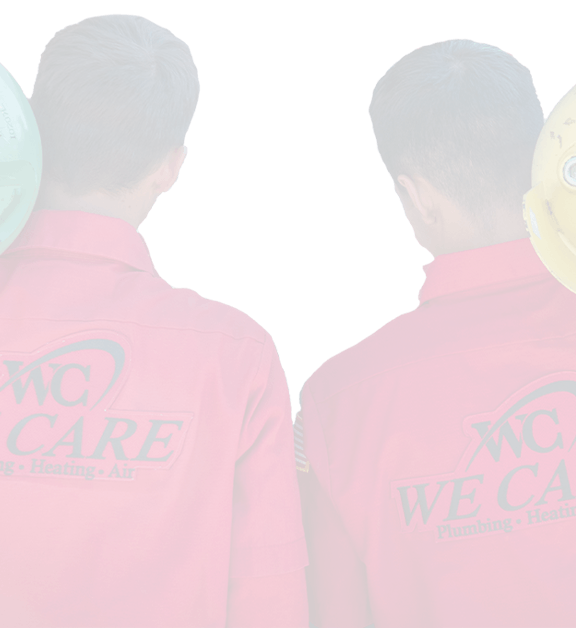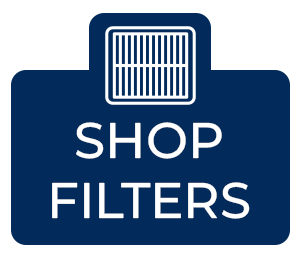Often, when people think about air quality, they visualize the pollution that factories produce. They may even think about the smog that occurs in some cities. Few of them actually ponder the indoor air quality in their own homes or consider the finer details of what impacts most of us on a daily basis.
The quality of the air we breathe is predominantly affected by things we cannot see, smell or touch. These are factors like allergens, bacteria, viruses and airborne chemicals. They can impact our health more quickly than more obvious contaminants, in part because we do not notice them. Contaminants that affect air quality can generally be classified into three categories: particulates, bioaerosols and hazardous gases.
Common Airborne Particulates
Common particulates make up the majority of what we think about when we consider filtering the air. This includes the obvious dust, dirt and pet hair. When you think about the stuff that collects on your floor or your furniture, it’s all composed of particulates.
Less commonly thought of particulates are those put into the air by your cleaners and air fresheners. These actually pose not only a health hazard but also a risk of damaging your HVAC equipment over time. They collect in your system as they pass through it, creating a sticky film that captures other particulates. Common scented candles and aerosol air fresheners are all contributors to this kind of contaminant.
Bioaerosols
The air also contains a host of biological contaminants. While these do include things like bacteria and viruses, they also include things like mold and fungus spores. As they collect in spaces like your heating ducts, they multiply and continue to produce more spores that circulate back into the air. You can see how easily this can become a self-perpetuating problem.
Hazardous Gases
Some hazardous gases are easy to identify, like the rotten-egg smell of natural gas. However, the rest of the gases we should be concerned with are virtually undetectable unless you specifically test for them. These include radon and carbon monoxide among others. Being alert to the issue and correcting problems that allow them to build up in your home is extremely important to your health.
Hazardous gases do not stop there, unfortunately. Your home is filled with other gases released by things like your linens, furniture and even your clothes. These are known as volatile organic compounds. The problem with most of these gases is not just their presence in your air but also the number of hours you spend breathing them in, especially while sleeping.
When you think about improving indoor air quality, it should be with all of these in mind. The big question is how do you make the air cleaner, reducing as many contaminants possible? If you could keep all of them out of your lungs, it would also improve the effectiveness of your heating and cooling systems.
Have Your HVAC System Cleaned
Once you become aware of the risks to your air quality, there are easy steps you can take to improve it by reducing airborne contaminants. The first one is to have your system cleaned.
HVAC systems get clogged and dirty, in part because they are often neglected. It is difficult, after all, to remember to clean something we cannot see. However, a system with a buildup of dust and other contaminants will not run efficiently. Furthermore, it perpetuates these contaminants in our homes by continuing to circulate them in the air.
- Air ducts
- Circulating fan
- Furnace heat exchanger
- Air conditioning evaporator coil
Monitor for Radon and Carbon Monoxide
Carbon monoxide poses a significant health hazard leading to asphyxiation and death, so you should have a real-time monitor. If your monitor goes off, get your family out of your home and call an expert to find the source and fix it.
Radon poses a longer-term threat. It has been linked to certain types of cancer. You can either use a DIY testing kit, or you can have a professional with expensive testing equipment conduct the examination. Either way, you should test regularly even if you do not detect an issue. If you find an issue, consult an air quality expert for options for reducing the concentration in your home.
Check All of Your Filters
Furnace filters are usually the first thing people think about, and that is the best place to start. To determine when you should check them, don’t rely on the time frame your filters are rated for. Inspect them more regularly, especially when you are first attempting to improve your air quality. Plan to check them every two weeks to see how quickly they are collecting contaminants. You may be surprised how soon they need to be replaced. You can also try vacuuming the loose particles from the surface of the filters to help extend their life.
Do not stop at the furnace filter, though. If you have a window unit air conditioner, check the filter in that as well. Be sure to also check the filters in your vacuum cleaner, the hood vent in your kitchen and the ventilation fans in your bathroom. All of these are places contaminants collect, and they need to be cleaned regularly.
Maintain Proper Humidity
Be sure to maintain the right humidity in your home as well, with the optimal range being 30%–50%. This means using a humidifier during the drier months and a dehumidifier when it is more humid. Run the ventilation fans in your kitchen and bathrooms when you are doing things that would increase air moisture like doing dishes or showering.
While using humidifiers, also be sure you clean them regularly and do not let water sit for days without running the device. These can quickly become incubators for algae and mildew, spewing their spores into the air.
Switch to Natural Cleaners and Air Fresheners
Consider switching to natural cleaners and air fresheners. There are many studies that have suggested these are as effective as their chemical counterparts but without some of the health hazards. In addition, any particulates they leave in the air do not cause the same issues with your HVAC system.
You may also reap multiple benefits. For instance, essential oils are used widely because of their wonderful aroma. Studies also suggest they have an ionizing effect, which is what most air purifiers use to remove contaminants from the air. Electric purifiers also create ozone, which is a different contaminant altogether. Diffusing essential oils helps to improve the quality of the air without the negative side effects.
Award-Winning Air Quality Experts
We Care Plumbing, Heating, & Air has been serving Southern California for the last 20 years, including Riverside, Orange, San Diego, San Bernardino and Los Angeles counties. Our team focuses on providing exceptional service to every customer.
This has earned us some prestigious awards such as:
- ACCA Contractor of the Year
- AC Pro President’s Circle Award
- Angie’s List Super Service Award
- Management Action Program’s President’s Award
- Lennox Healthy Climate and Premier Dealer Awards
All of these just demonstrate that our NATE-certified technicians take the time to understand and conscientiously deal with each client’s needs. We offer reliable products including Phenomenal Aire and CAREAire systems. Call our office in either Murrieta or Orange today to schedule your air quality consultation with We Care Plumbing, Heating, & Air.






